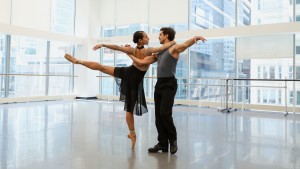Joffrey pirouettes to stability and growth

Chris Jones, Chicago Tribune
Arts organizations often have money problems and the cuts flowing from President Donald Trump’s administration have only made them more acute. Dance companies typically struggle more than most. But in Chicago, there’s a ballet company with an impressive record not just of creative success but financial stability.
Consider. Like many ballet companies, the 70-year-old Joffrey makes its annual bones on “The Nutcracker.” Last year, Christopher Wheeldon’s adaptation, set during Chicago’s 1893 World’s Fair, brought in more than $7 million in ticket sales and played to more than 50,000 people. Since its debut in 2016, that annual production alone has grossed more than $30 million.
This spring, the exceptionally well-managed Joffrey risked more than $3 million on a new Wheeldon production of “Alice’s Adventures in Wonderland.” It paid off. It grossed $2.69 million in ticket sales just on this first go-around. 30,000 people bought tickets over the course of the 14-performance run. Most performances sold out; no mean feat for a venue with 3,520 seats.
All of that goes someway toward explaining why the Joffrey, which is run by artistic director Ashley Wheater and President and CEO Greg Cameron, has an annual operating budget of about $29 million and employs about 300 full- and part-time people in Chicago, does not carry a deficit, or struggle with debt.
Over the past 10 years, with the help of its board of directors, it has built up a total endowment of $32 million. Ten years ago it did not have any endowment at all.
There’s another factor too: smart consolidation, a rarity in the arts.
On Wednesday, the ballet company told us it was extending its lease at the Lyric Opera House for seven more years through 2034, continuing an agreement that began in 2020 when Joffrey made the smart decision to move its main performance venue from the Auditorium Theatre.
This has been a win-win situation for both the Lyric and the Joffrey, creating a dynamic combination operating within a historic building that’s a pivotal cultural anchor on the western edge of Chicago’s Loop. Opera audiences are not as large as they once were, so runs are not as long and thus the Lyric had empty weeks, especially during the holiday period between the fall and spring opera seasons. Joffrey got the benefit of a massive stage, a grand auditorium with a huge capacity and an aesthetically pleasing environment.
The combination of ballet and opera in the same building is common in Europe (it occurs with the Royal Opera House and the Royal Ballet in London, among many others) but less so in the United States. Yet it makes perfect sense, not least because there is a big overlap between ballet and opera audiences. Not only can each company market to the other, they can share the heavy costs of live production, virtually year-round.
Tough as they have been for most peers, the last five years have been phenomenally successful for the Joffrey. This Chicago company is a balletic model for the nation.
Read the article on the Chicago Tribune.